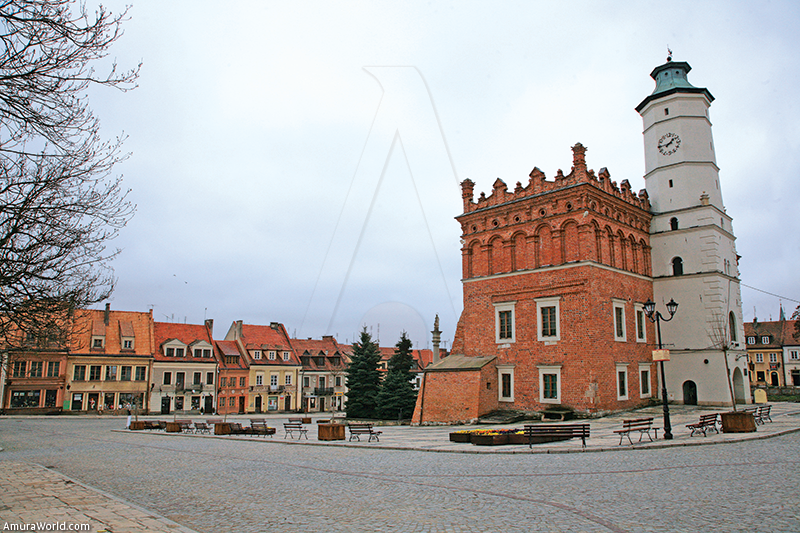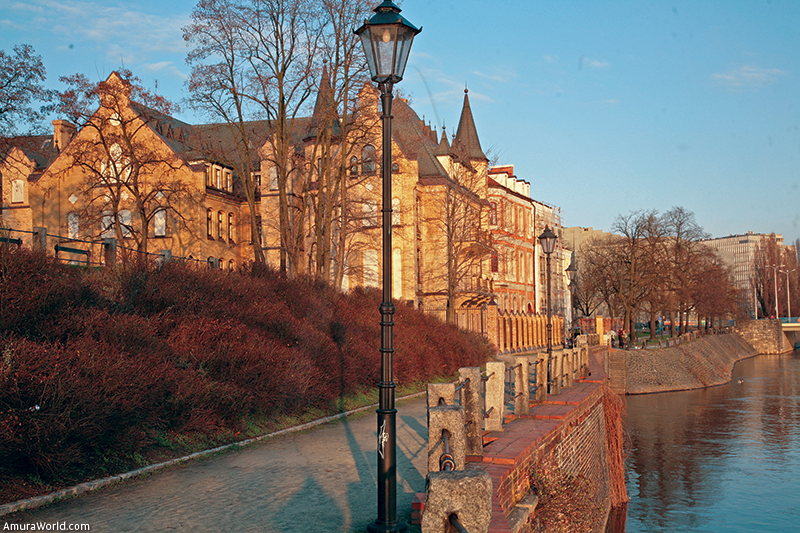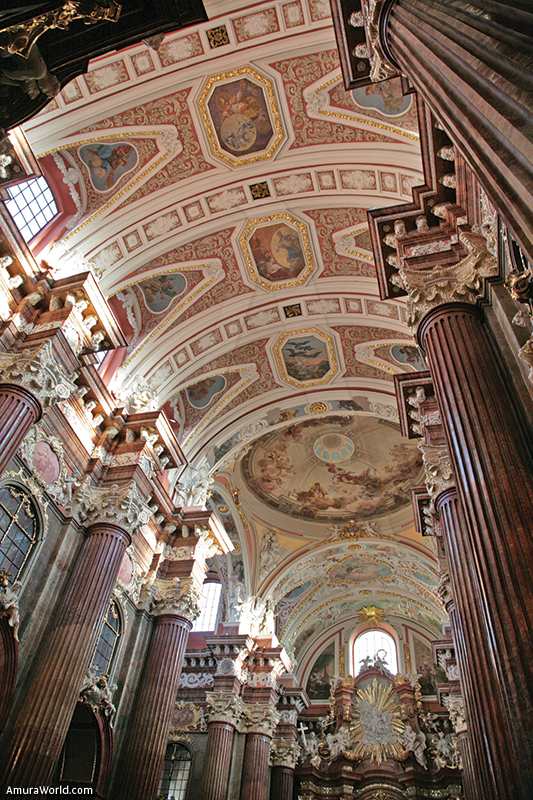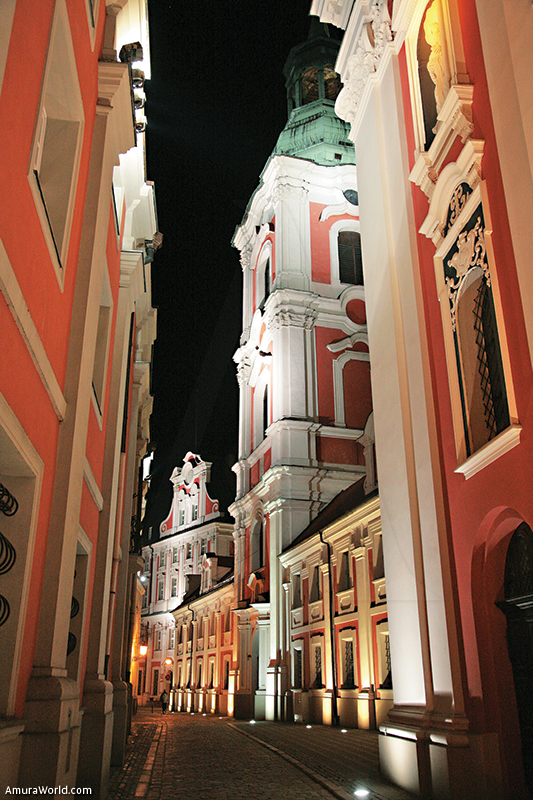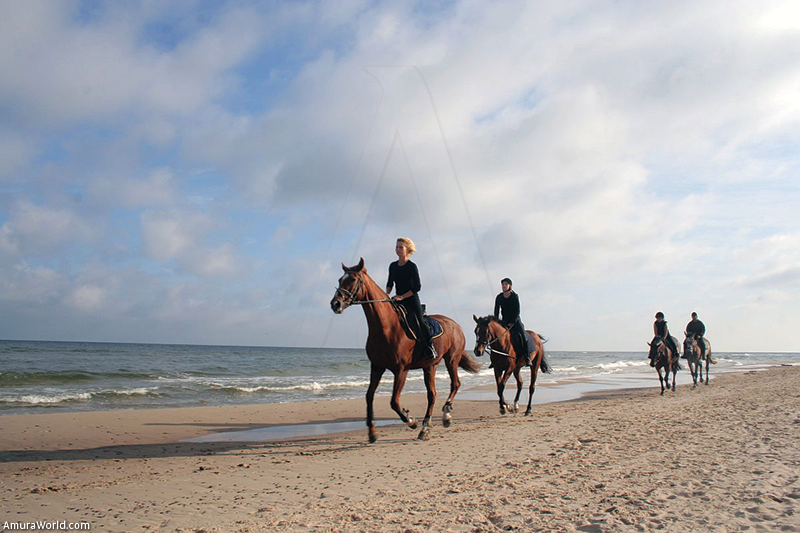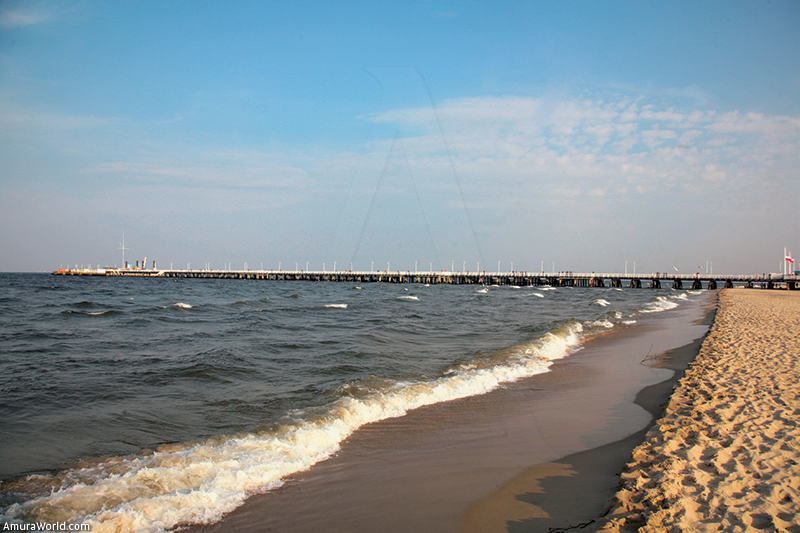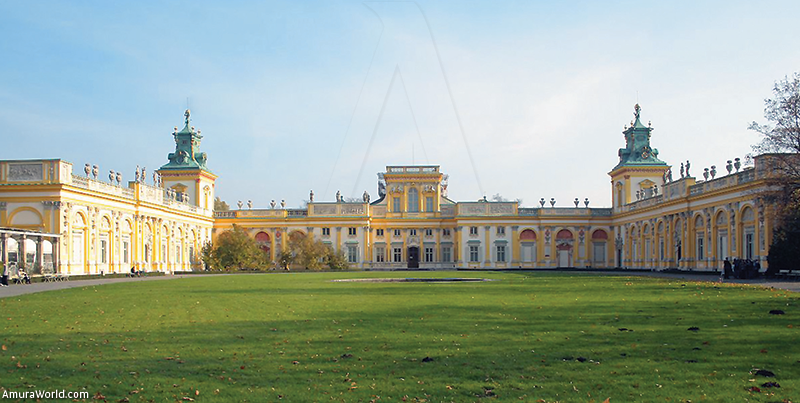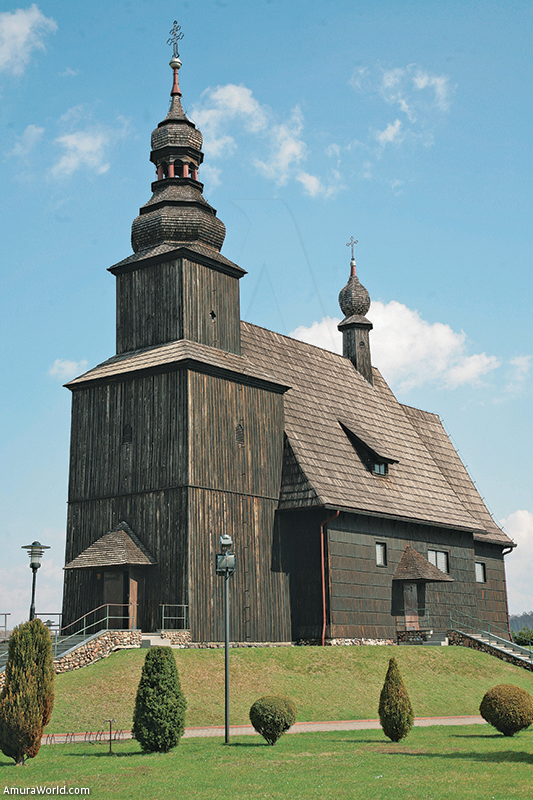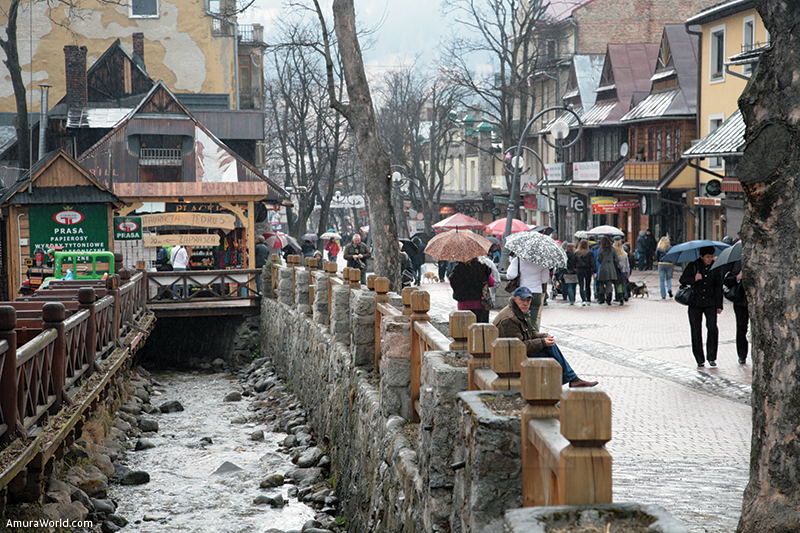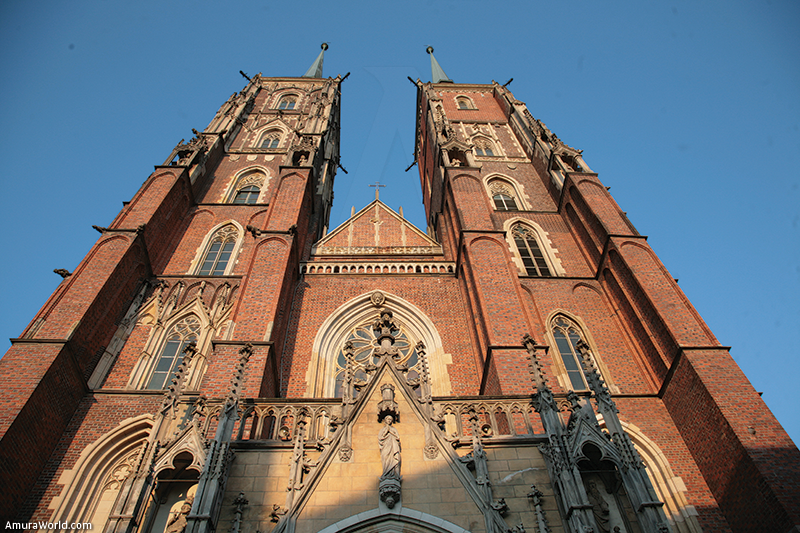A timeless journey amidst medieval towns and history.
Between the Carpathian Mountains and the Baltic Sea, there extends the fertile valleys of Poland, where its villages join themselves unto its hills, playing with the meadows of the Vístula and other rivers that serpent their way, and where one finds the last wild European bison’s. Enchanting, sophisticated and caring, Poland seduces one by way of its people, its architecture and its exquisite cuisine. It enchants one when it is discovered while walking through its alleyways, its fortresses and the towers that guard its plazas.
Sopot and Gdansk
Facing the capricious winds of the Baltic Sea, we had been navigating from Copenhagen, until we reached the polish shore near Darlowo. We followed the white sandy beaches where the air flows amongst the barren vegetation, following the northern wind and the dunes that protect the swamps and the costal lagoons. Beautiful houses adorned the scenery, offering a panorama worthy of a medieval painting. We passed the small town of Wladyslawowo near the dock to circumvent the long, sandy peninsula that takes one to Hel, which protects the bay of Puck. We had entered the famous Gulf of Gdansk, bordered on the east by Russia and the cities of Kaliningrad and Baltiysk, and where the Vístula river turns into a mighty delta.
We then reached Sopot, an ancient aristocratic dwelling that enjoyed it glory years before the Second World War, a place where nobles and princes flocked to in the summer to enjoy its thermal waters. We lodged ourselves in the wonderful Grand Hotel Sopot Sofitel to experience that 1930s fever, when the city rumbled with sophisticated glamour. The beaches were home to swans and ducks, while Molo, the largest wooden dock in Europe, invites one to take a stroll over the water and enjoy a sublime view.
Afterwards, we entered the Motlawa River until we reached the city of Zielona Brama, the Green Entrance of Gdansk. This was built in 1560 in order to be the residence of the future kings, and it opens its arches over the Royal Road where the Polish kinds would parade themselves whilst visiting the city under the watchful eye of the vigilant tower. Dlugli Targ was the main maket, and it is now a favourite spot for tourists. There one can admire the Zlota Kamienica; the fountain of Neptune and Dwór Artusa. The Town Hall, built in a Gothic and Renaissance style, boasting the highest tower of Gdansk (81.5m), and a golden statue of king Zygmunt II, is today the Museum Historii Miasta Gdanska, where the impressive baroque doors with the arms of the city guarded by two lions stand, and it’s the home of the Czerwona Room, where council members would meet.
Following the Royal Road, we travelled then through Ul Dluga, one of the most famous streets of Poland, drinking beer at the Celtic Pub. We also enjoyed the amber shops and we then reached Zlota Brama (golden door) and Dwór Bractwa Sw Jerzego. Close by we discovered Przedbramie, or frontal door, formed by Katownia (torture home) and Wieza Wizzienna (prison tower), which harbours the marvellous museum of Amber, the “Gold of the Baltic”. We also discovered Brama Wyzynna, built in 1574, Wielka Zbrojownia, built in the 17th Century and adorned with military motifs, statues of soldiers and the crest of the city.
We enjoyed the typical polish food at the Restauracja Gdanska, which included roasted meet, sour cabbage, soup, sausages and duck with various sauces. We then walked through Ul Mariacka, the main street of Gdansk, until we reached Brama Mariacka (door of Santa Maria) next to the river where we admired Zuraw Gdanski, a medieval wooden crane with two large pulleys to unload ships.
We kept on walking next to the river, observing elegant buildings and we once again found our sailboat to return to Sopot and conclude our day in a spectacular manner, dining at the Art Deco restaurant Grand Sopot Sofitel to enjoy the exceptional creations of chef Leszek Patoka and enjoy a romantic evening in front of the Baltic Sea.
Malbork
We leith out sailboat at Sopot to travel through Poland through its countryside, one charged with history. The closet we got to this regions was Malbork (Marienburg), and impressive gothic fortress built by Teutonic Knights in the 13th century on the shore of the Nogat River. Expanded over time, it is currently conformed of three intricate castles that form the largest brick fortress in Europe, where we visited the medieval rooms of the main plaza and the rest of the cathedral.
Torun
Our next step following this route took us to the town of Chelmno, a place with an imposing wall perforated with entrances, high medieval buildings made with bricks, and an enchanting central plaza where the mayor’s office resides. Finally, we reached Torun, a walled city near Vístula, the native town of astronomer Nicolas Copernicus, famous for having over 300 monuments pertaining to the art history of Europe. As we walked through the central plaza and adjacent roads, we penetrated into a universe that has remained unchanged for 700 years, one that has maintained its medieval appearance.
Named a World Heritage Site by UNESCO, Torun seduces one with its medieval ambience and gothic homes; the Dom Pod Gwiazda, with its rich decorated façade and snail-shaped stairs, is a pleasure to discover, as well as the murals we found as we walked through the alleyways.
Absorbed by the beauty of the homes and the enchanting atmosphere filled with lively people, we reached the main plaza occupied by the town hall at its centre, one of the largest in Poland, featuring an impressive brick tower that dominates the statue of Copernicus. We discovered the Cathedral of Saint John the Baptist and Saint John the Evangelist, built in the 16th century, majestic and fascinating, home of renaissance and baroque altars, sculptures and paintings, solemn in that fresh spring day.
We then reached the beautiful church of Santa Maria where a wedding was being celebrated, the church of Saint Jacob, with its monumental murals from the 14th century. Following the road that travels down with the river, we discovered one the entrances of the wall that follows the Vístula, a testimony to the strength of the city, and we ended at the ruins of a castle once built by Teutonic Knights. Torun is a genuine jewel from the past, where people are enchanting, the food excellent, and the museums fascinating.
Bialystok
After passing through tranquil and romantic towns, we reached our next destination, Bialystok, at the heart of the Podlaskie region, home of national parks, and considred the ‘lung’ of Poland. It shadowy streets lead one to a central plaza enclosed by the Town Hall and the imposing Cathedral. When we arrived it was raining, mass was ending, and the people walked hurriedly so as to not get wet. We discovered the sumptuous palace of Branicki, built in the 18th century by Jan Klemens Branicki, who strived to be the King of Poland, and we enjoyed the Bialy, a traditional cake made in Bialystok that contains onions, garlic and poppy seeds, similar to a bagel.
Bialowieza
We then made our way to the East of the country, towards the border of Belorussia, travelling through enchanting towns, and following roads that cross through forests.
Soon after we reached the national park of Bialowieza, and immense forest composed of extremely ancient evergreens where, walking through the guided dirt roads, we were able to see a few wild European bison. Declared a hunting ground in 1541, is suffered much deterioration at the hands of war, until it was named a national park. The wisent (bison bonasus) is the European bison, larger than its American counterpart, which lives in the swampy forest and which we could observe not far from our spot.
In the guarded and enclosed area, we discovered up close, next to a gray wolf, the extremely rare Felix lynx, the red deer, and the elk, as well as wild boars. It was a feast of local fauna, with the addition of birds surrounding us. It was a wonderful experience, to be in contact with nature in such an intimate manner. We ate goulash, apple-roasted pig, and boar win wine sauce in a local restaurant before continuing our journey through the rural highway towards Warsaw.
Warsaw
The capital welcomed us with its mundane traffic and noise, in the middle of a whirlwind of immense buildings from the Soviet era and some from medieval times. We lodged ourselves in the luxurious Jan III Sobieski hotel. Here I found a childhood friends Kaska, Elka and Alinka, who would be our guide during our journey in the city. We began at Nowy Swiat, the street where the noblity erected their homes near the palace of the king. It is an enchanting city with a great variety of buildings, restaurants and cosy cafes.
We arrived at the fabulous Copernicus monument, which is found in the Krakowski Przedmiencie street, a place that took us, as well, to the baroque church of Santa Cruz. We enjoyed a stroll while Alinka described the various buildings, starting with the Czapski Palace, a typical example of Rococo architecture, the elegant Europejski hotel, built in the 19th century, the baroque Potocki Palace that was originally built by the Denhoff family, the Kazimierzowski Palace, built in the 17th Century, and which form part of the elegant University of Varsovia.
We then found the Presidential Palace, adorned with a elegant equestrian statue of prince Józef Poniatowsk, and we discovered the Visitation Church while letting ourselves be enraptured by the baroque chapels and its unique pulpit in the shape of a ship adorned with sculptures and paintings.
The Kazanowski Palace was one the most extravagant aristocratic palaces; the church of Saint Anne shines with its neoclassical façade. For its part, the Bristol hotel is an example of Varsovian splendour. And, finally, we reached the Zambowy plaza that is found at the heart of old part of the city, framed by an austere Royal Palace with an immense patio, now a museum of history, and the bourgeois houses, adorned by the column of King Sigismund III.
Kazimierz Dolny
We left Varsovia to discover the enchanting town of Kazimierz Dolny, located in one of the most beautiful regions of Poland, on the shores of the Vístula River, a place that has conserved its renaissance architecture. The market square gleams with its open spaces that surround a covered well, a church and an old granary that decorate the town where the air is inhaled peacefully under the shadow of the castle that dominates the hill. It is an enchanting polish corner, romantic, as well, and with a fantastic cuisine.
Lublin
Travelling through the countryside towards Lublin, we reached the capital where the historic centre hurdles itself amongst the hills, just like in medieval times: fortified, with monumental doors and an imposing wall. After passing by Brama Krakowska, we walked through the alleyways dotted with homes that echoed the sound of past battles; the main plaza welcomed us with decorated façades, restaurants and cafes, the Dominican church conserves its gothic architecture still, and from the balcony we had the most impressive view, standing at the top of the imposing castle.
The cathedral, built in a neoclassical style, still conserves its Rococo “tropme l’oeil” frescos. The Gridzka entrances marks the entrance to the Jewish borough, and the new part of the city, built in the 18th century, proved to be an ideal place for shopping. Because of its strategic location, Lublin has forever been desired by conquerors, and it is now the ninth largest city in Poland, as well as being a grand student centre, which gives it a homely ambience.
Zamosc
We ended our day at Zamosc, a town founded in 1580 by Jan Zamoyski, following a renaissance design: perfectly straight roads, fortifications and buildings inspired by Italian design. We visited the church, the synagogue, the market and feasted on regional cuisine at Muzealna, a restaurant located on a basement and which opens its terraces towards the plaza in the spring. Zamosc is a treasure, a town that has felt the effects of time, yet has not suffered under them. It possesses an exquisite romantic flavour, one that transports travellers to days of yore.
Cracovia
Crossing through gorgeous Swintokrzyskie voivodato countryside, we reached Sandomierz. This town, situated at the crossing of the Vístula and San River, has been an important spot since the Middle Ages, and its walled historic centre crowns a hill where the market square is adorned by a Town Hall in the form of a fortress. Its cathedral is impressive, as well as the castle and the church of Saint Jacob that is found on the Jacobean route. Travelling through the hills of Województwo malopolskie (Little Poland), we discovered a wonderful wooden church, homely and adorned with refined icons; then we departed to Cracovia.
A testimony of the times of war is Wawel, a fortress mounted on a cliff at the edge of the Vístula River. At its foot one finds the gleaming Stare Miasto, an elegant thimble of ancient alleyways that lead to the Rynek Glówny plaza, also surrounded by a wall, and adjacent to it we find Kazimierz.
Crossing the monumental doors, we penetrated into a medieval world that blinds one with its beauty, beginning with the imposing and grandiose cathedral, the place where Polish kings where coroneted. Its interior boasts the chapel of Sigismund, defined as renaissance Tuscan art north of the Alps, whit its golden copula, as well as the tombs adorned by perfect sculptures. The choir, the tomb of Casimir, the Chapel of the Holy Cross, the Royal Crypts and the bell of Saint Sigismund weighing more than 11 tons left us dumbfounded.
The castle of Zamek Królewski is a complex mix of styles with a patio decorated with columns and elegant chambers that harbour authentic treasures amongst the extravagant objects in place. From atop the wall we admired the fabulous views of the river and the city.
Outside of the centre we were surprised by the Bozego Milosierdzia sanctuary, the Bielany (Klaztor Kamedunów) monasteries and the Tyniec abbey. We visited fascinating museums such as Sukiennicach, the archeological museum, and the Ciolek, Krzysztofory and Hipolitów Palaces.
Cracovia is also a place for fine cuisine, and we enjoyed dished garnished with duck, bitter cabbage, beats, borsh and exquisite sausages accompanied by good polish beer and European wines. Each night, a different concert animated the theaters, the churches, or the private palaces. The shores of the Vístula incited one to take a romantic stroll at the foot of the Wavel, admiring the swams and the ducks being fed by locals and tourists.
Kazimirez is a neighborhood full of history, and we ended our journey enjoying the stillness of the Skalka sanctuary, at times vibrating with galloping of the horses that broke the silence of the night, taking in that moment the romantic past of the city.
Not far away one finds Wadowice, the town where Pope John Paul II was born, and further north lays Czestochowa, the pilgrim temple where the Virgin is worshiped. Jasna Góra is a sanctuary built on a hill where a church harbours the image of the Virgin of Czestochowa as well as numerous chapels worthy of recognition.
Worclaw
Once in Worclaw, we stayed at the Sofitel in the main plaza, a sophisticated hotel in the midst of a medieval atmosphere. The terraces filled the plaza with people enjoying beer and appetizers, making for an exquisite and embracing evening.
Passing the romantic bridge over the Oder river, we entered the most ancient part of the city, Ostrów Tumski, whose name appears on records of the 10th century in the Amber Route. In the first island, Wyspa Piaskowa, we found the orthodox church of Saint Anne, the university library, and a gothic style church. Crossing the Most Tumski bridge, we arrived to firm land, the centre of Ostrów Tumski, where we found sober-looking houses, bridges that connect islands and a few cathedrals.
The Palace of Wroclaw rises majestically at the edge of the river, as well as the immense university built there in 1728 that reflect itself on the tranquil waters, with its four statues that represent philosophy, medicine, mathematics and law.
Poznan
Following the road to Wielkopolska, we found precious lakes, cozy restaurants to try the food of the region, chapels and castle ruins. We arrived at Poznan in time to visit the beautiful central plaza. The first thing one notices is the immense Jesuit convent and the church of Saint Sanislaw. As we walked through the alleys, we came into the market square, which has been in place since 1254.
In the plaza we found the Bamberka well, the Persephone fountain, and the town hall, rebuilt in 1560. We visited the imposing castle of the Emperor built in the 19th century, and the theater and garden that exuded Polish greatness. Between the Wartand Cybina rivers we found the ancient city of Ostrow Tumski and the cathedral of Saint Paul and Saint Peter. Finally we arrived at Sopot.
Poland is a book of baroque paintings, of gothic architecture, or romantic scenes and encounters with people who smile with a bit of sadness in their hearts. They have lived through tumultuous times, reigns of kings and heroes, epic battles. But, the Poles form part of a wonderful and passionate journey. Each of its town and cities is a jewel amongst the vast land. Its beautiful facades vibrating to the rhythm of history and battle. Poland is a jewelry box of emotions.
Text: Patrick Monney ± Photo: cortesía del Ministerio de Relaciones Exteriores de Polonia, Patrick Monney

